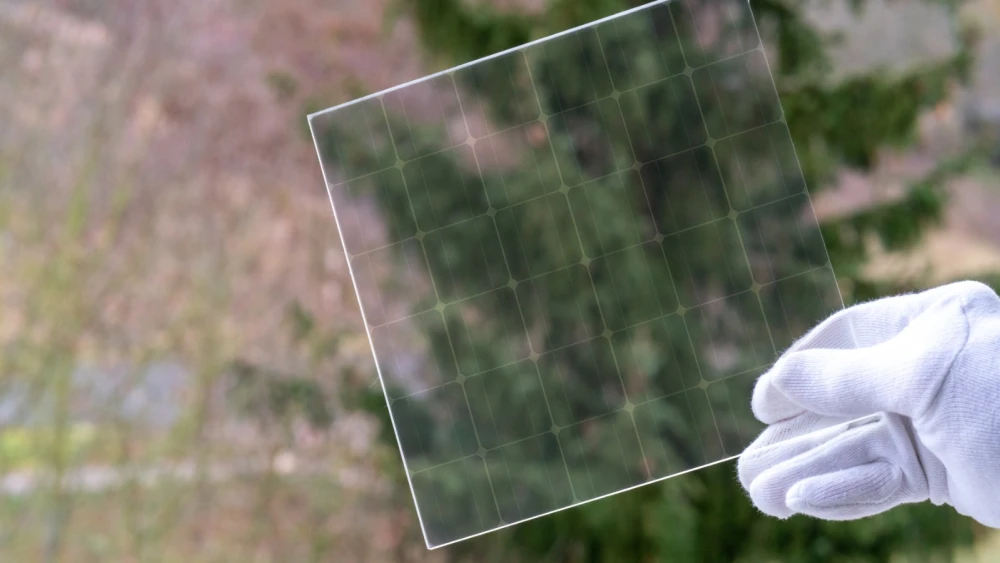Sunshine-a-go-go! Solar power, its design, competitiveness and culture, is advancing at a giddying speed. A compendium
From Wikimedia
Solar power - which AG’s core team remember the late Hazel Henderson being the great prophet of - is booming and booming at the moment. Innovations, new league tables, outperformances of fossil fuels - it’s happening everywhere. We have so many references to it, we thought we’d create a compendium of solar leads we’ve picked up in the last few weeks.
Transparent solar panels
From Freethink:
The challenge: Solar power will likely play an increasingly important role in curbing global greenhouse gas emissions as innovations continue to boost the efficiency of the technology.
One way solar could soon become more widely used would be to integrate solar panels onto a wider array of commonplace materials and technologies without inconveniencing the ways we currently use those things today.
Materials scientists have recently been exploring how solar panels could be made to blend in with their surroundings by making them more transparent. If achieved, energy harvesting devices could be discreetly placed on top of windows, display screens, or even human skin — expanding the reach of the technology even further.
By harnessing the unique properties of advanced solid materials, engineers have made progress toward transparent solar panels. But for now, even the latest designs allow less than 70% of incoming light to pass through them — not nearly enough for the devices to blend in with their environments.
The new design: A team of researchers in Japan have now made promising steps toward solving this transparency issue. Led by Toshiaki Kato at Tohoku University, the team’s innovative design works by exploiting complex interactions between ultra-thin materials.
More here. Nature paper on detail of the science here.
Cheaper to install solar than to build a gas-powered plant in the US
From Ars Technica:
In the western US, where solar productivity is highest, most power purchase agreements are going for even less than the LCOE {levelized cost of electricity, the latter being a measure that compensates for the benefits of tax incentives to provide a more direct measure of how much a method of generation cost]. These are priced in the area of $20 per MWh.
Elsewhere in the US, they're typically in the $30-40 range. By this measure, that means solar is now competitive with wind in many areas of the US—exactly which of the two is cheapest will depend on the wind and solar resources at a site.
But the most striking thing about this figure is that the Department of Energy says it's competitive with "the cost of burning fuel in existing gas-fired generators." In other words, it can potentially be more economical to not operate an existing gas generator and use the money you'd spend on fuel to install a solar farm instead.
From Dezeen’s Solar Revolution series
There are so many good ideas here, from a design and engineering perspective, that we encourage you to visit their archive and explore. Below is a slideshow of their menu page, with all the items in their series featured. But click here to get to them directly.
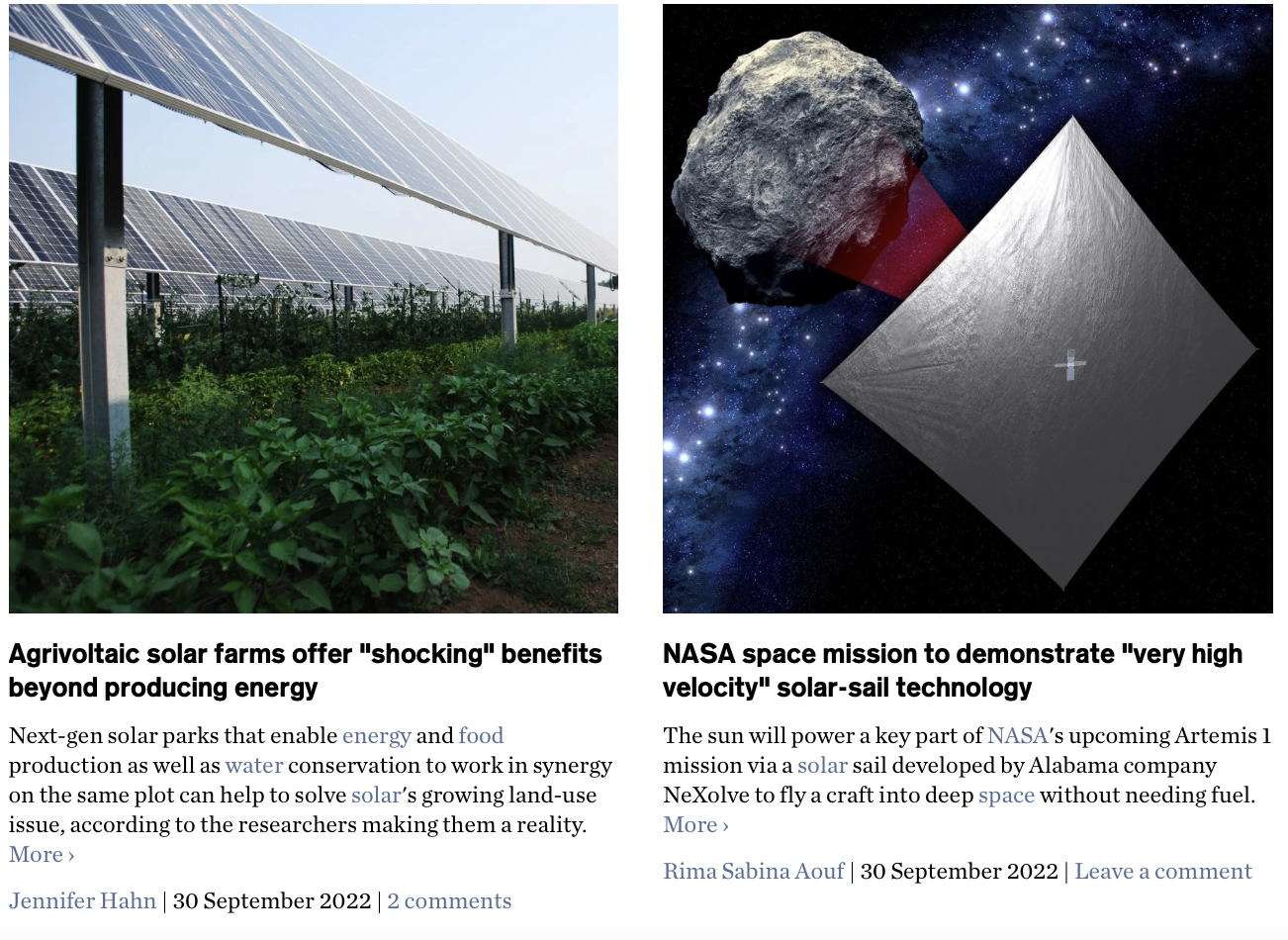
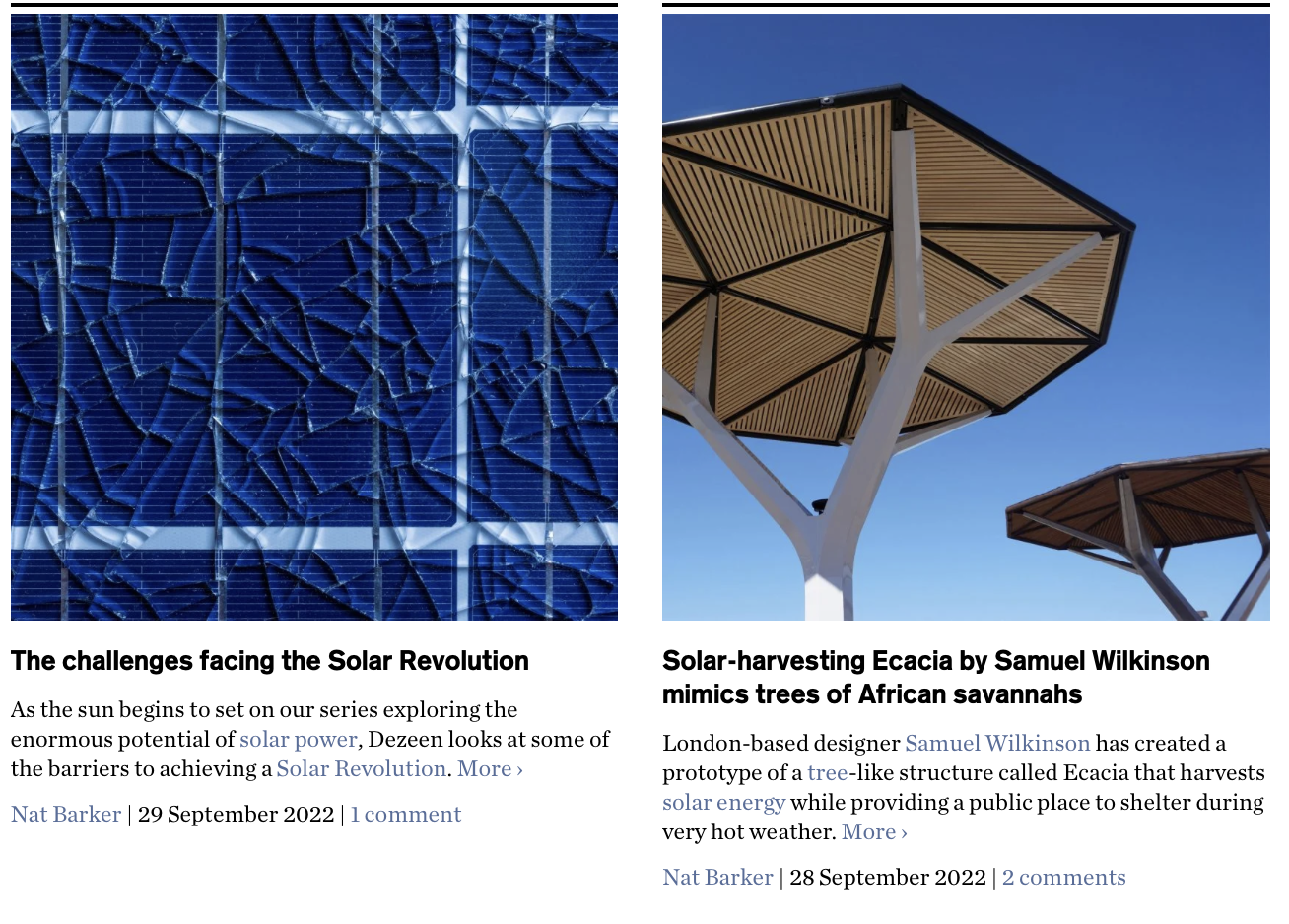
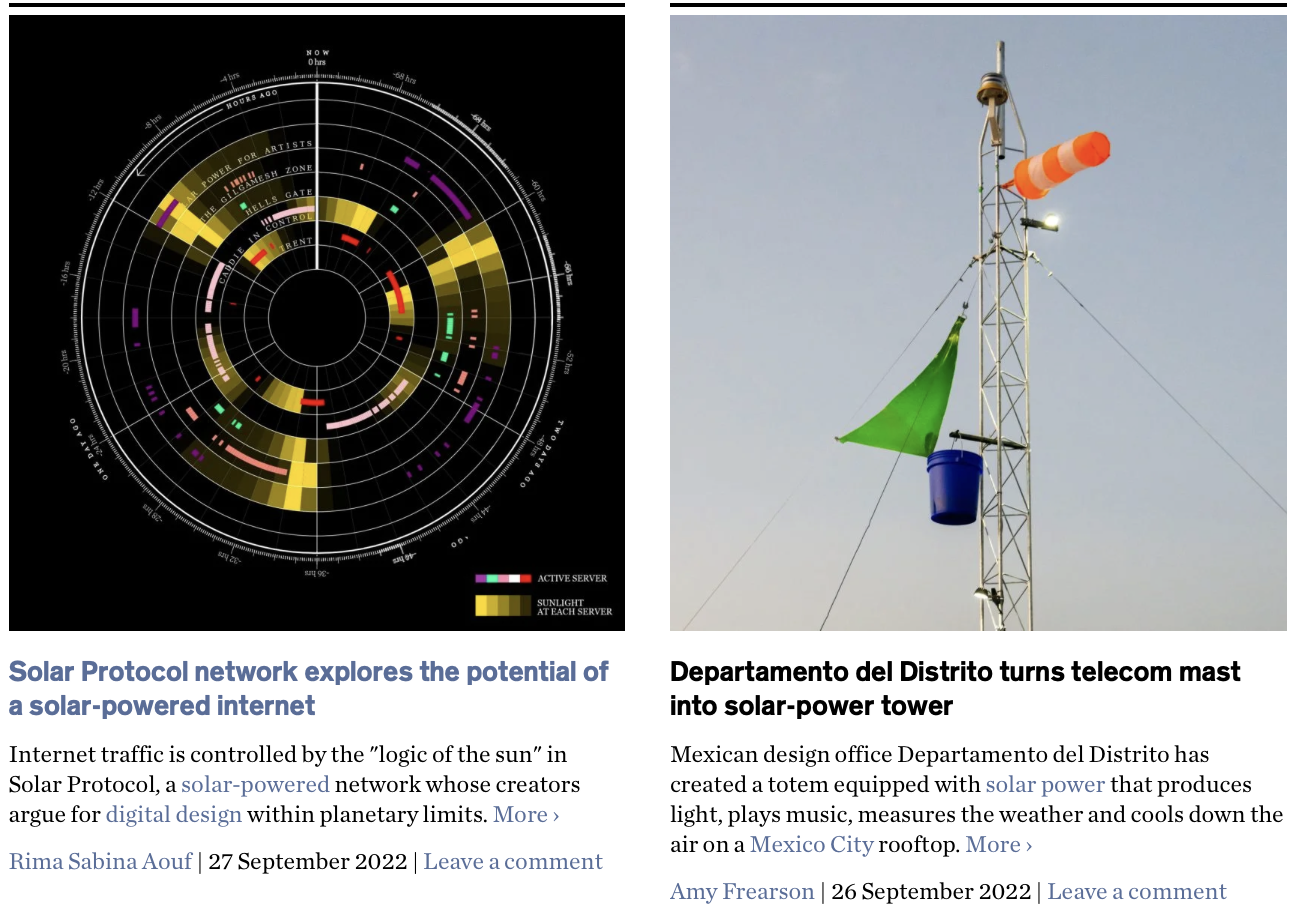
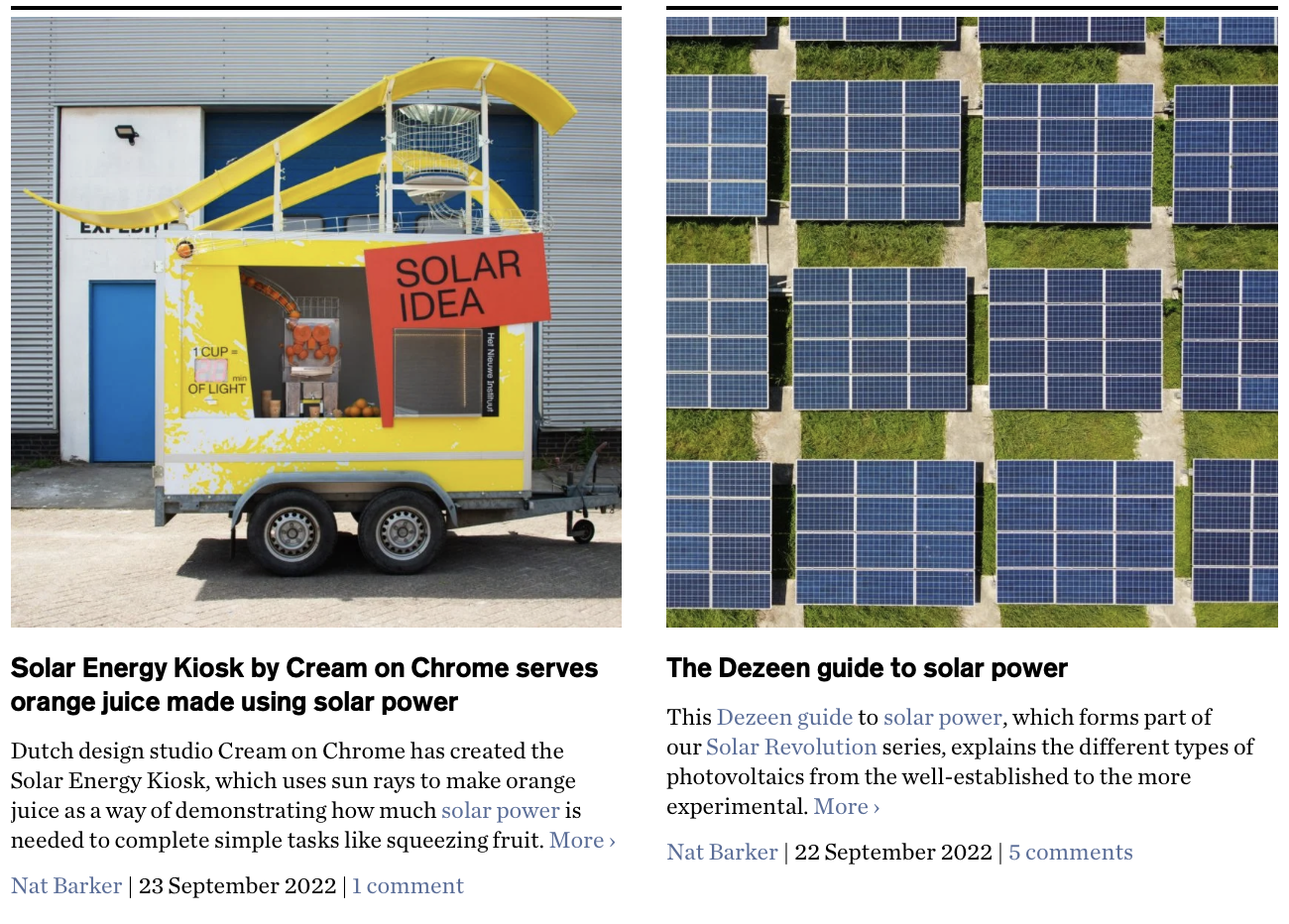
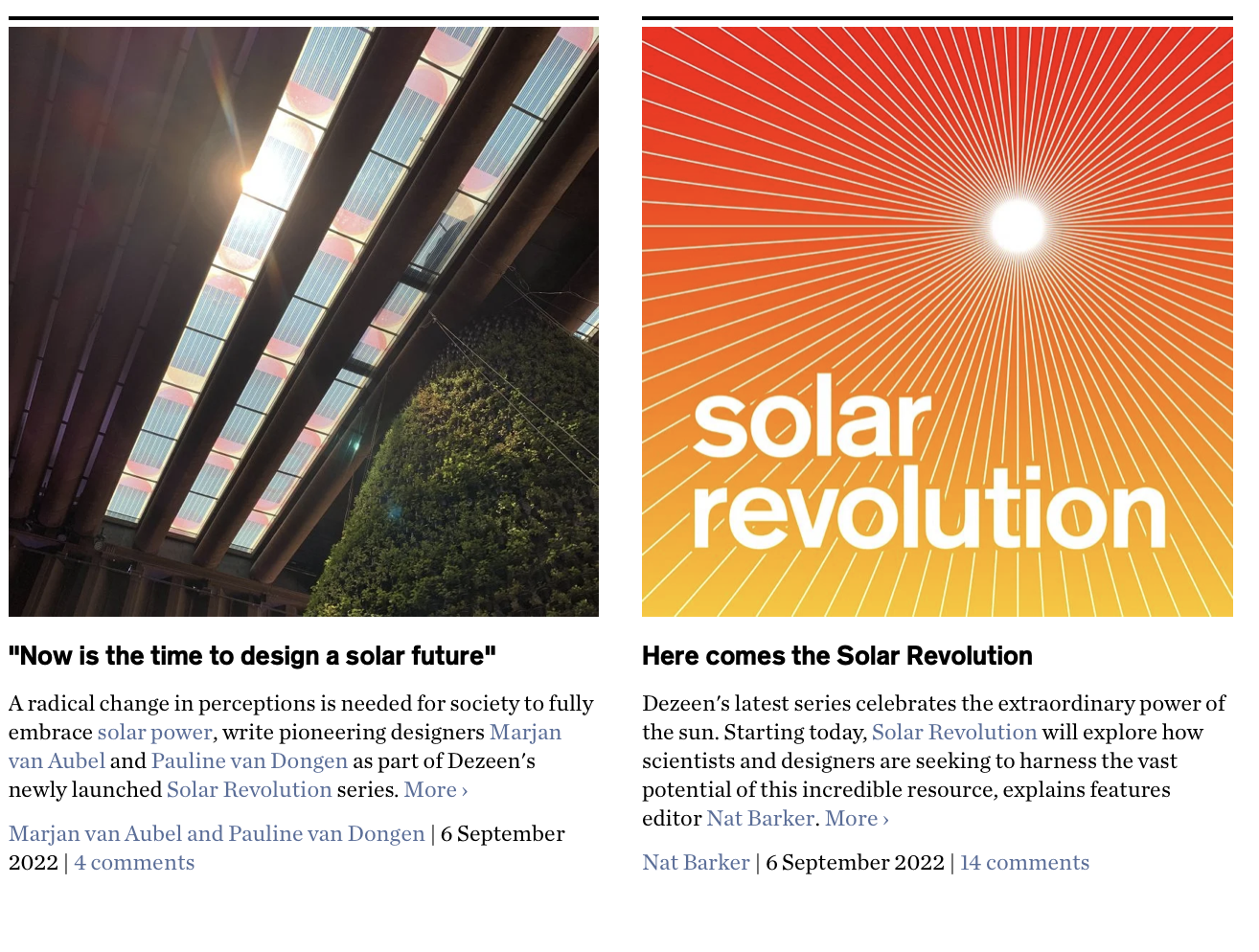
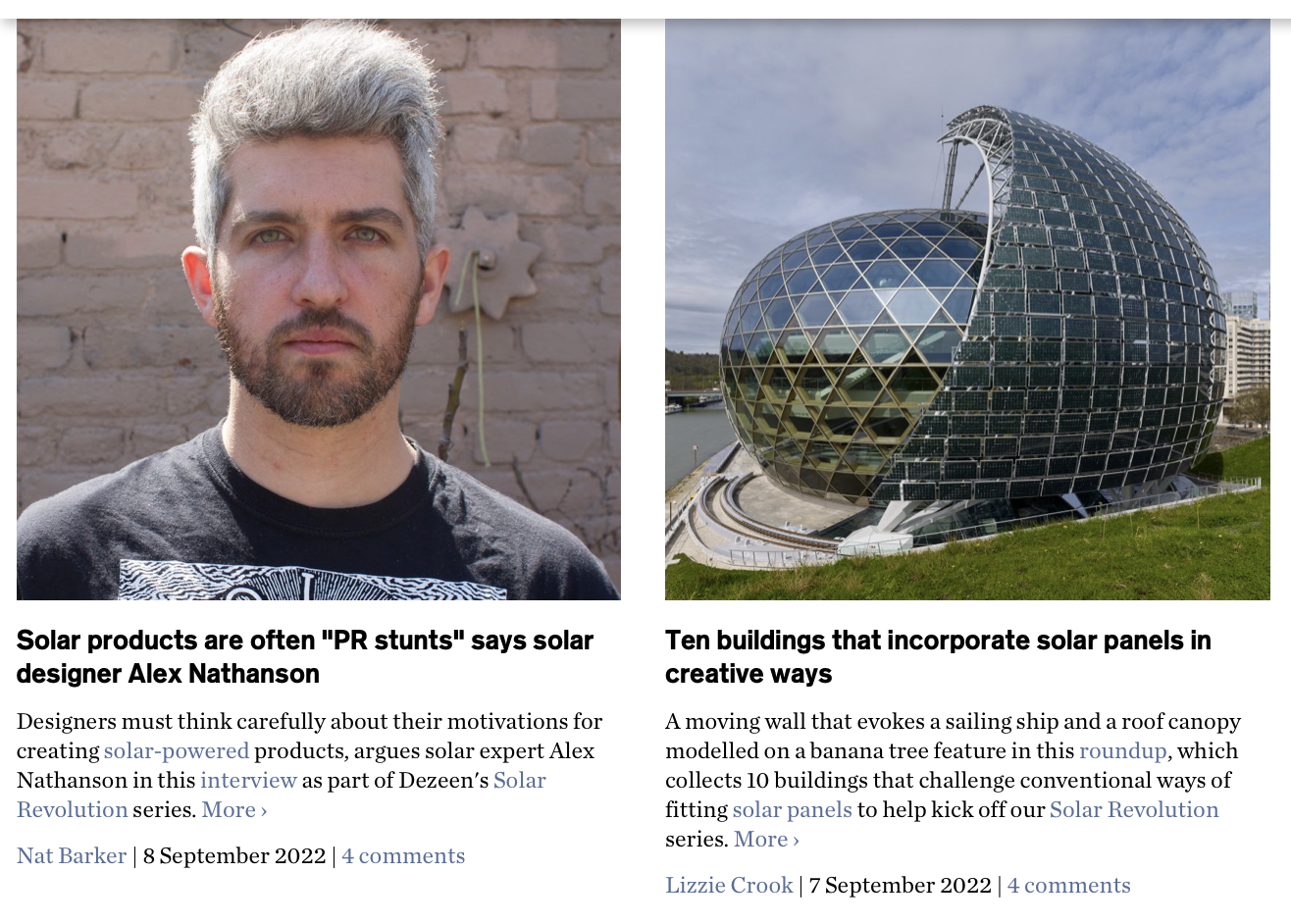
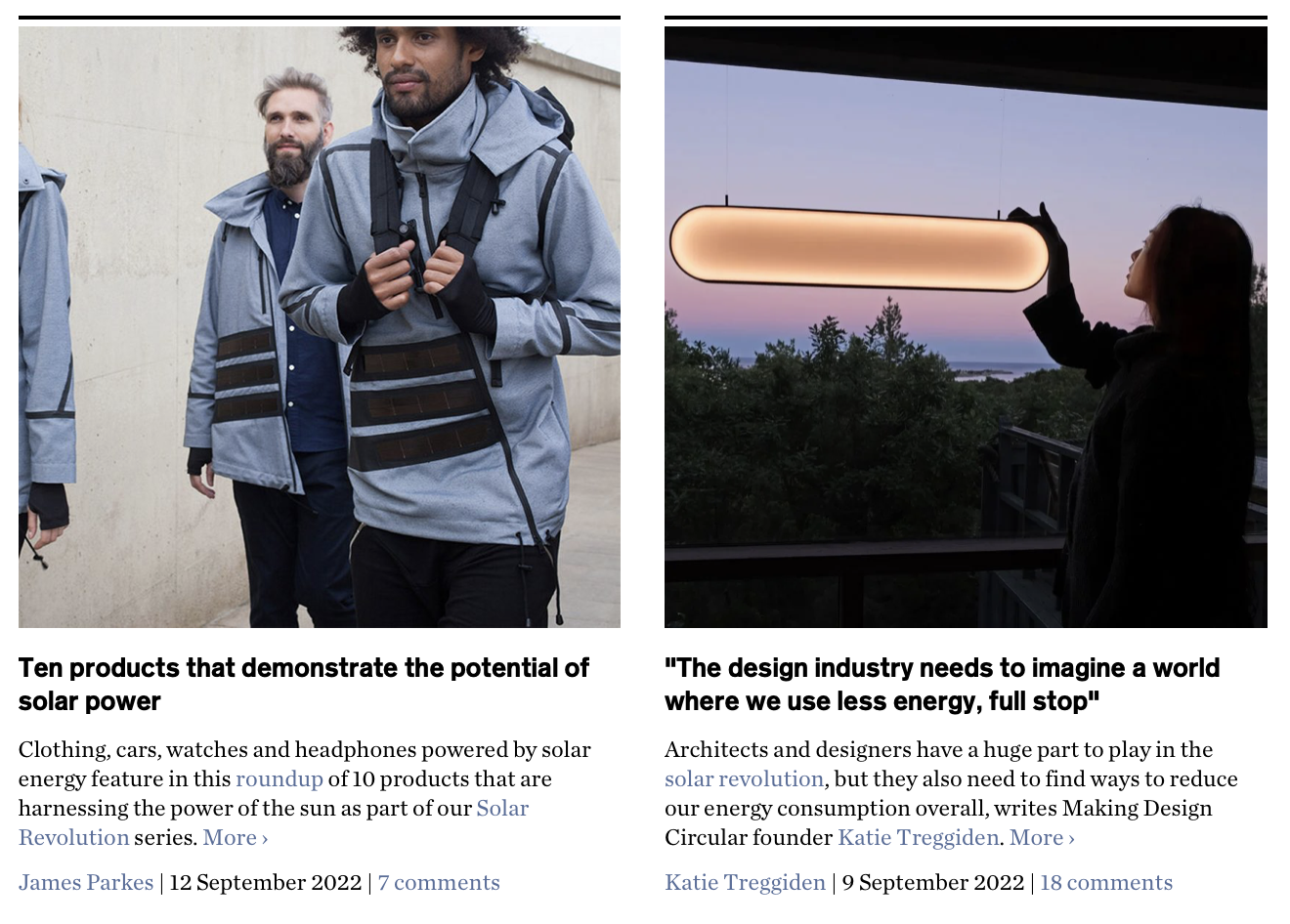
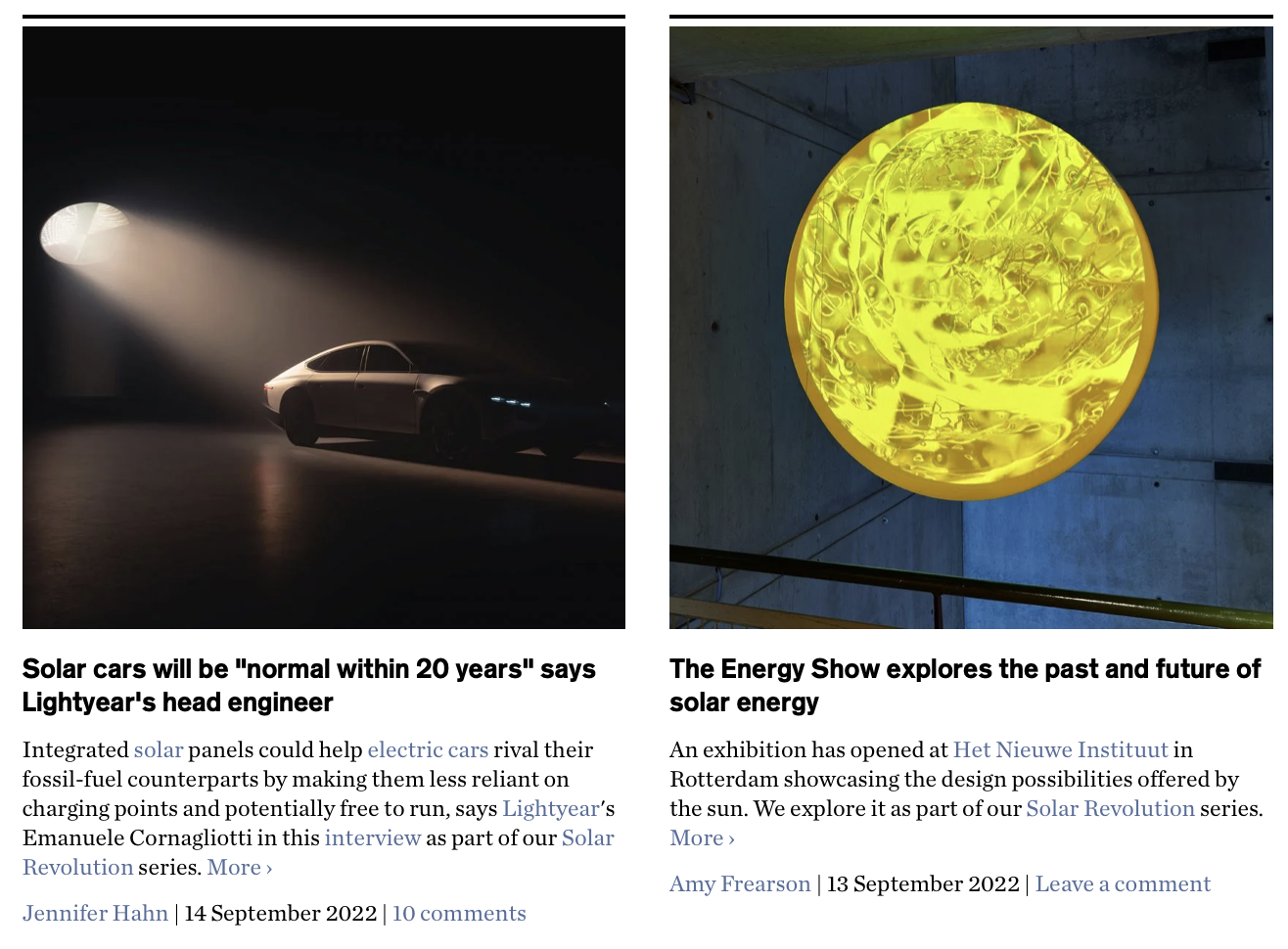
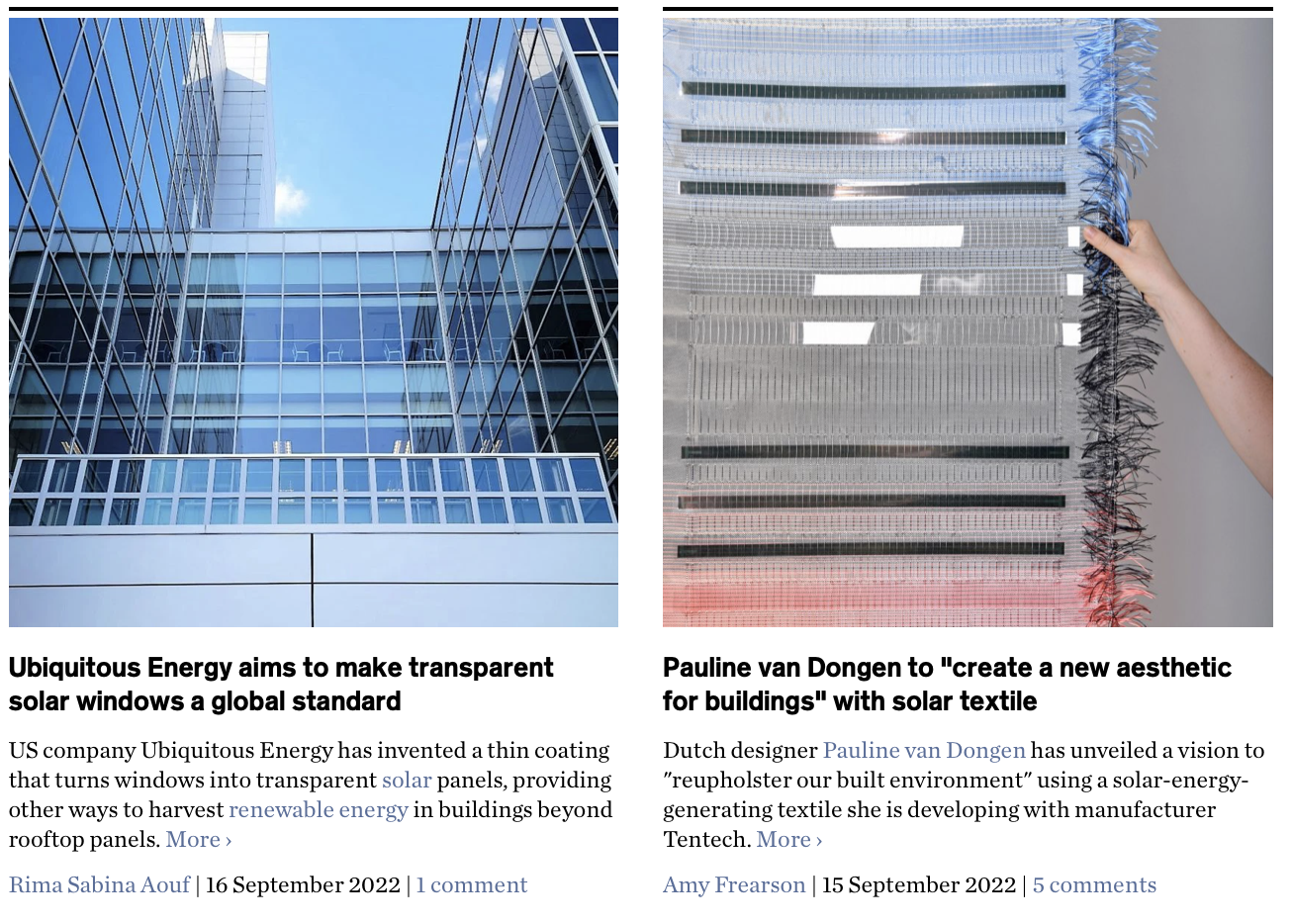
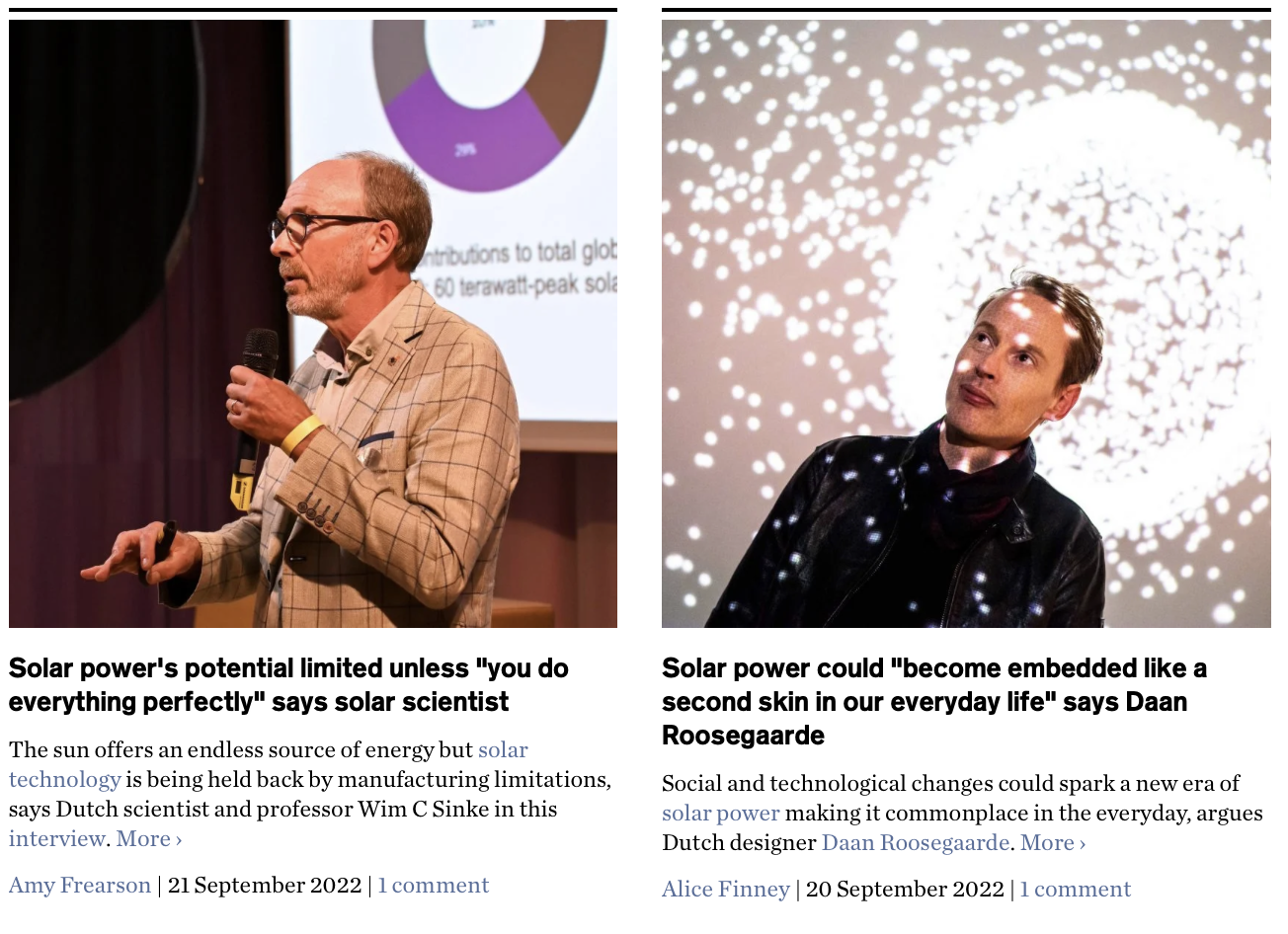
This graphic is from the content stream Energy Monitor’s report - which has a thumbnail explanation of each nation’s solar prominence in their energy mix, as itemised above.


